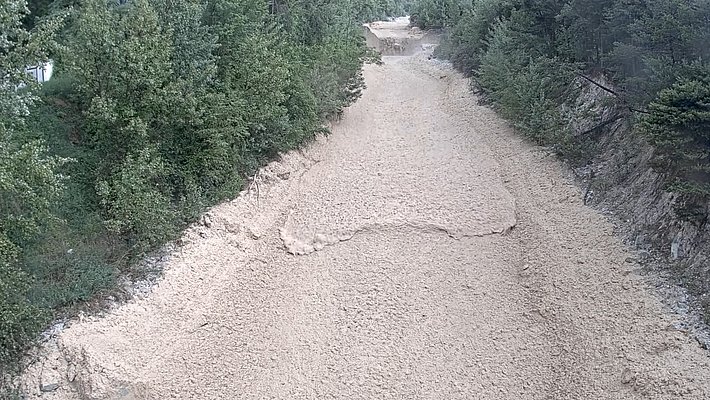In Switzerland, natural hazards such as avalanches, landslides, rockfall, debris flows, flooding and forest fires can cause considerable damage. Through our research and services, we help to protect people from such dangers.
In Switzerland, 23 people are killed on average each year by avalanches alone, flooding and mass movements cause damage amounting to an average of CHF 300 million per year. As the population continues to grow, more and more buildings are located in at-risk areas. When glaciers melt and permafrost thaws as a result of climate change, this threatens to set in motion enormous quantities of soil, rock and scree.
We look into how different natural hazards arise, how far, how quickly and how vigorously they develop, and how people can protect themselves, e.g. through spatial planning, reliable forecasting or technical protective measures. Thereby we lay the scientific foundations for risk analysis and for evaluating whether protective measures and warning systems are effective and economical.
As well as scientific and engineering research, this requires economic and social analysis, and close cooperation between the various actors. After all, dealing with natural hazards present politics, government and society with the challenge of finding widely accepted and economically viable risk reduction strategies.
Observation and simulation ¶
In order to understand the processes of natural hazards in detail, we run facilities which are unique worldwide. In the Illgraben (VS), for example, we observe naturally occurring debris flows with various measuring instruments. As part of field experiments, we investigate the dynamics of avalanches, debris flows, rockfall and landslides under realistic conditions. At our site in Cadenazzo (TI) we record and analyse forest fire events, develop methods and concepts to evaluate the risk of forest fire, and determine their consequences for ecosystems such as protection forests.
Thanks to this measurement data, we now understand better than ever how these natural hazards arise, and are able to simulate the processes within them in increasingly precise computational models. This is useful for developing protective measures and hazard maps.
Forewarned and informed ¶
When it comes to warning and prevention systems, we play an important role nationally as well as internationally: in winter, the avalanche warning service at the WSL Institute for Snow and Avalanche Research SLF publishes the well-known avalanche bulletin twice a day. Our hydrologists are involved in warning the public about instances of flooding and severe drought.
We make our data and findings available to the public on internet platforms and as apps, so that crisis managers can access the information quickly in an emergency. We also publish leaflets and brochures.






